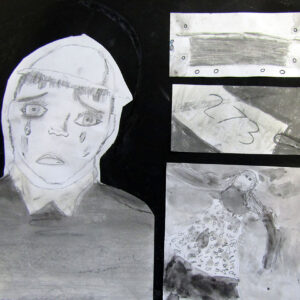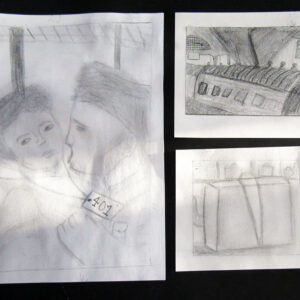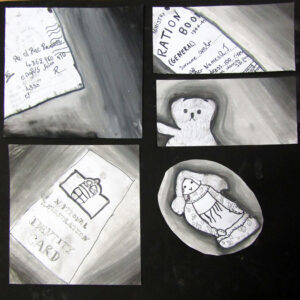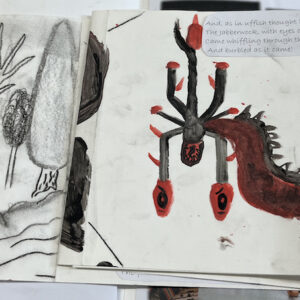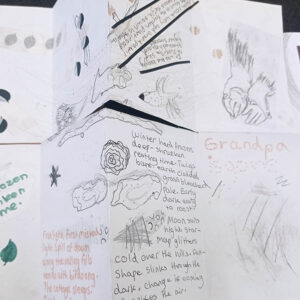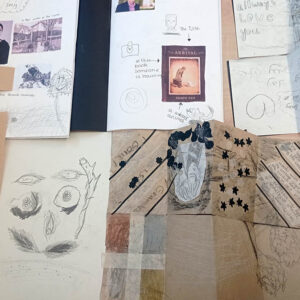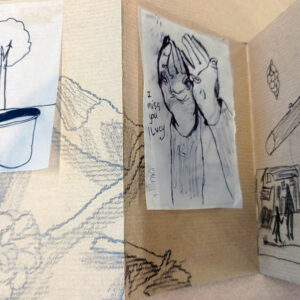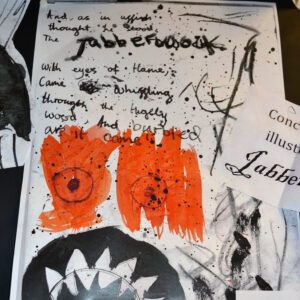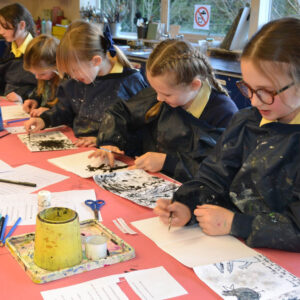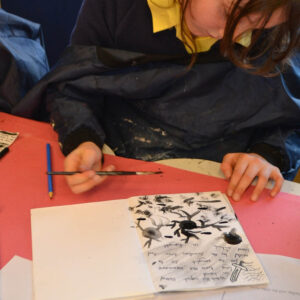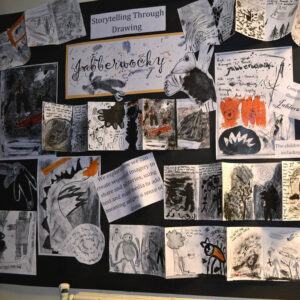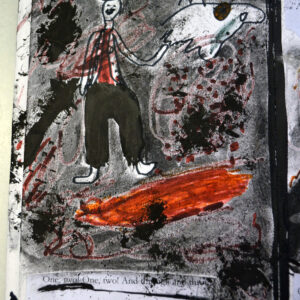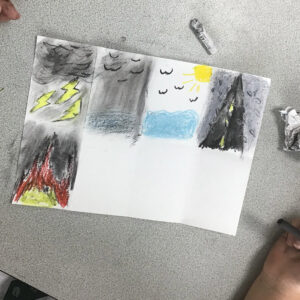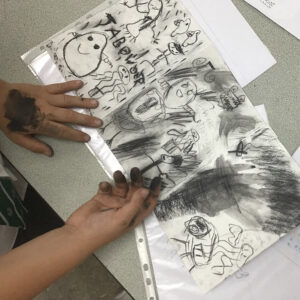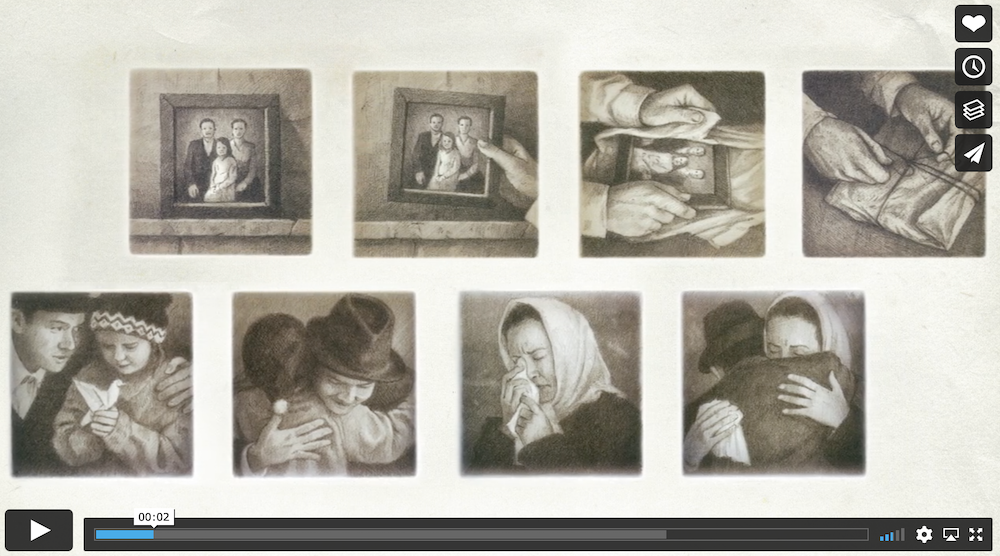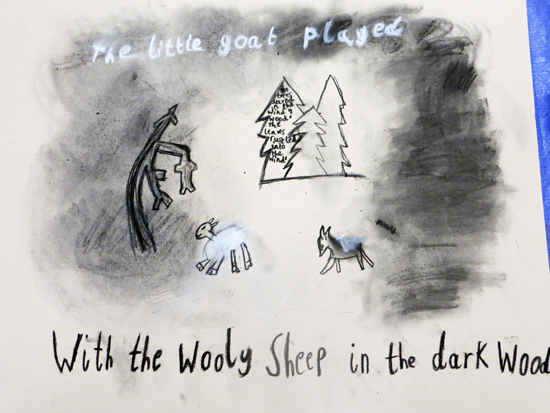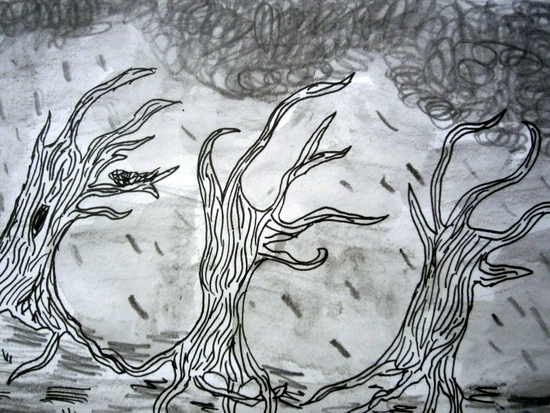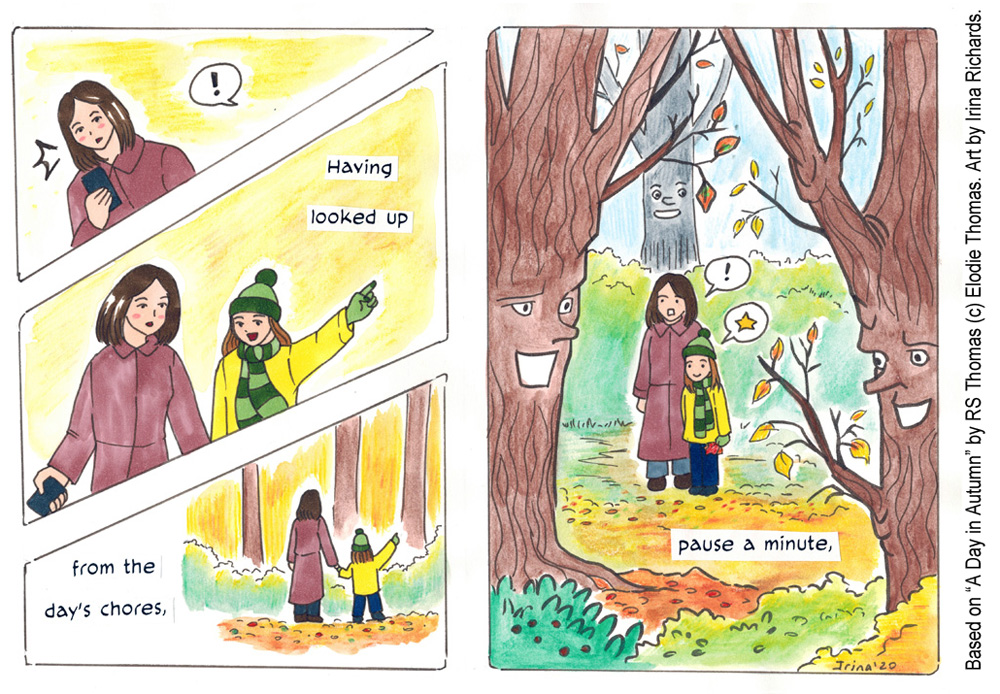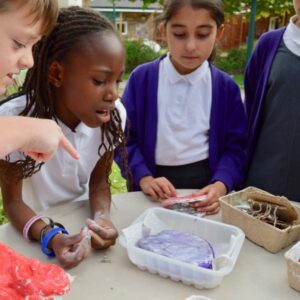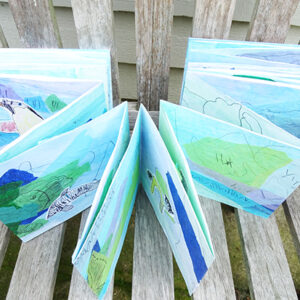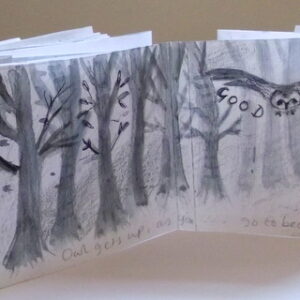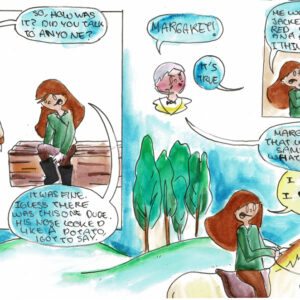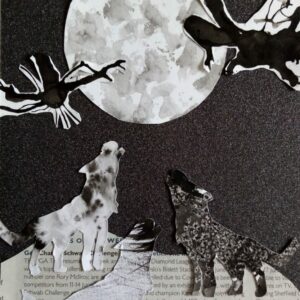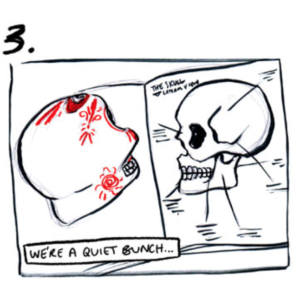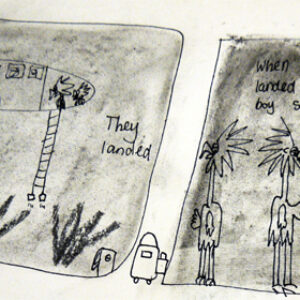Pathway: Storytelling Through Drawing
Pathway for Years 3 & 4
Disciplines:
Drawing, Sketchbooks
Key Concepts:
-
That we can tell stories through drawing.
-
That we can use text within our drawings to add meaning.
-
That we can sequence drawings to help viewers respond to our story.
-
That we can use line, shape, colour and composition to develop evocative and characterful imagery.
In this pathway children explore how we can create sequenced imagery to share and tell stories.
The pathway starts by introducing two artists: one an illustrator and the other a graphic novelist and author. Children use sketchbooks to gather ideas from the way the artists work.
There is then a choice of two projects: the first explores the creation of an accordian book – inspired by a piece of literature, exploring how we can use drawing in an illustrative or even fine art sense to tell stories.
In the other option children draw upon graphic novels and make a comic strip style telling of a piece of poetry.
Medium:
Drawing Materials, Paper
Artists: Laura Carlin, Shaun Tan
If you use this resource in your setting, please tag us on social media: #InspiredBy @accessart (facebook, twitter) @accessart.org.uk (instagram) and share the url. Thank you!
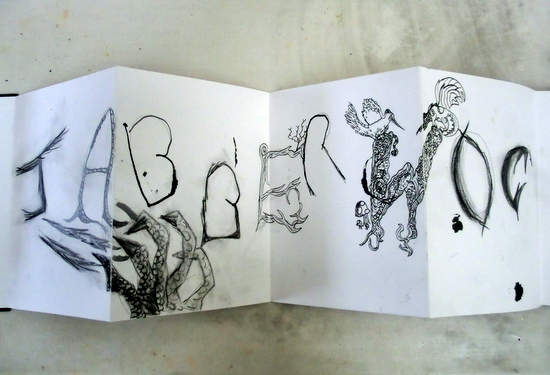
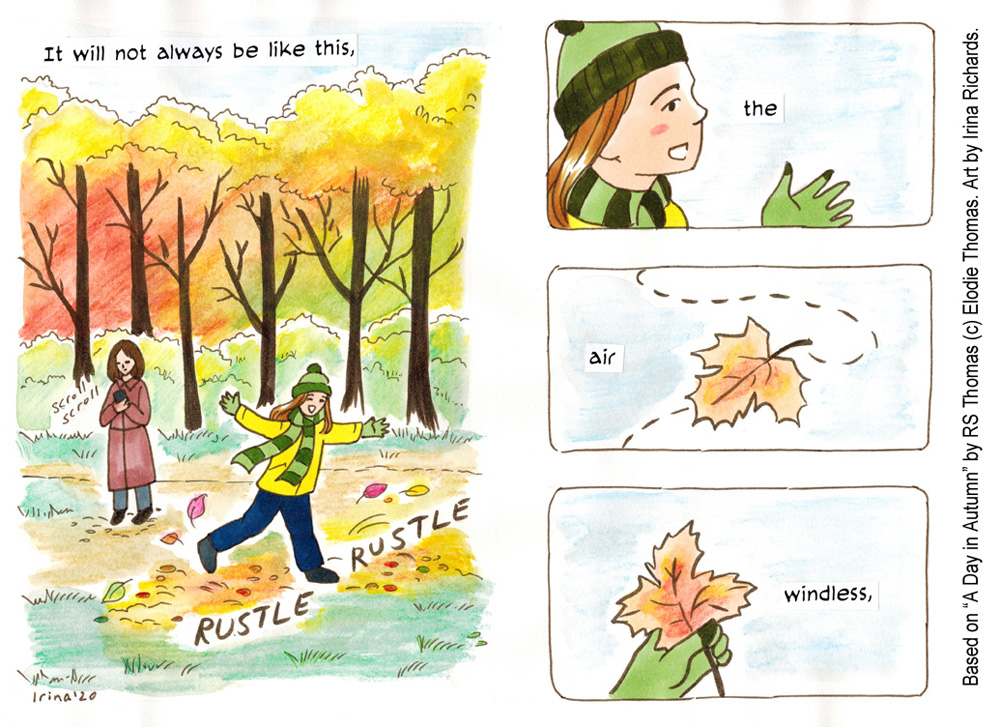
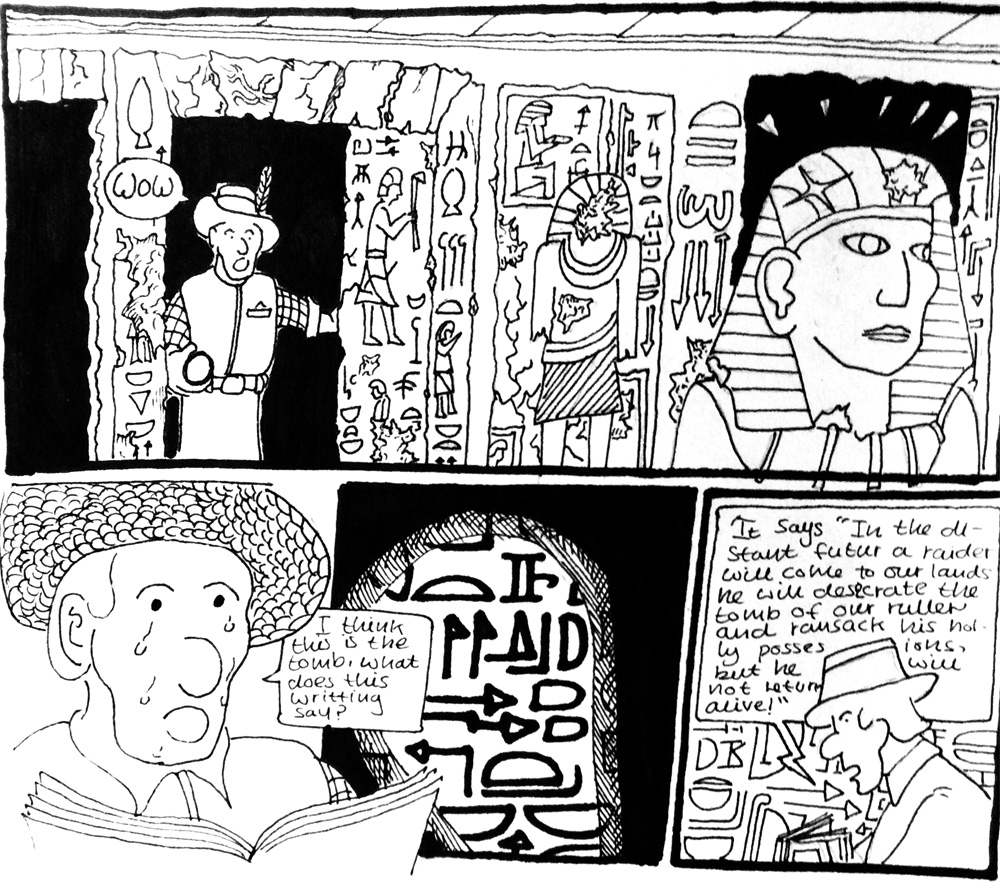

Teaching Notes
Find the MTP for this pathway here.
Curriculum Links
English: Use The Jabberwocky by Lewis Carol as inspiration for this pathway, or choose another story or graphic novel of your choice.
History: Create your own sequenced story inspired by an event in history ie from The Anglo Saxon, The Viking, Ancient Greeks, Ancient Egyptian or The Roman eras.
Science: Use language to support concepts around light and shadow, and how this can be explored on paper through drawing.
PSHE: Supports Collaboration, Peer Discussion.
I Can…
-
I have explored the work of artists who tell stories through imagery.
-
I can respond to the work of illustrators and/or graphic novelists, “reading” the visual images and sharing my thoughts.
-
I can work in a sketchbook to record my ideas and thoughts generated by looking at other artists’ work.
-
I can use a sketchbook to generate ideas about how I might respond to a piece of poetry or prose.
-
I can use line, shape, and colour using a variety of materials to test my ideas.
-
I can think about how I might use composition, sequencing, mark making and some text in my drawings.
-
I can create a finished piece which contains sequenced images to describe a narrative.
-
I can share my work with others and talk about my journey and outcome. I can listen to their feedback and take it on board.
-
I can appreciate the work of my classmates and think about similarities and differences between our work. I can share my feedback on their work.
-
I can take a photograph of my work, thinking about lighting and focus.
Time
This pathway takes 6 weeks, with an hour per week. Shorten or lengthen the suggested pathway according to time and experience. Follow the stages in green for a shorter pathway or less complex journey.
Watch the “How do Non-Specialist Teachers Teach Art” video if you are a non-specialist teacher to understand how to model an open and exploratory approach.
Time
This pathway takes 6 weeks, with an hour per week. Shorten or lengthen the suggested pathway according to time and experience. Follow the stages in green for a shorter pathway or less complex journey.
Materials
Soft B pencils, handwriting pen, coloured pencils, oil/chalk pastels, charcoal, graphite, ink, paints, A2 or A3 cartridge paper (cut & into folded accordion books).
See the Pathway Used in Schools...
